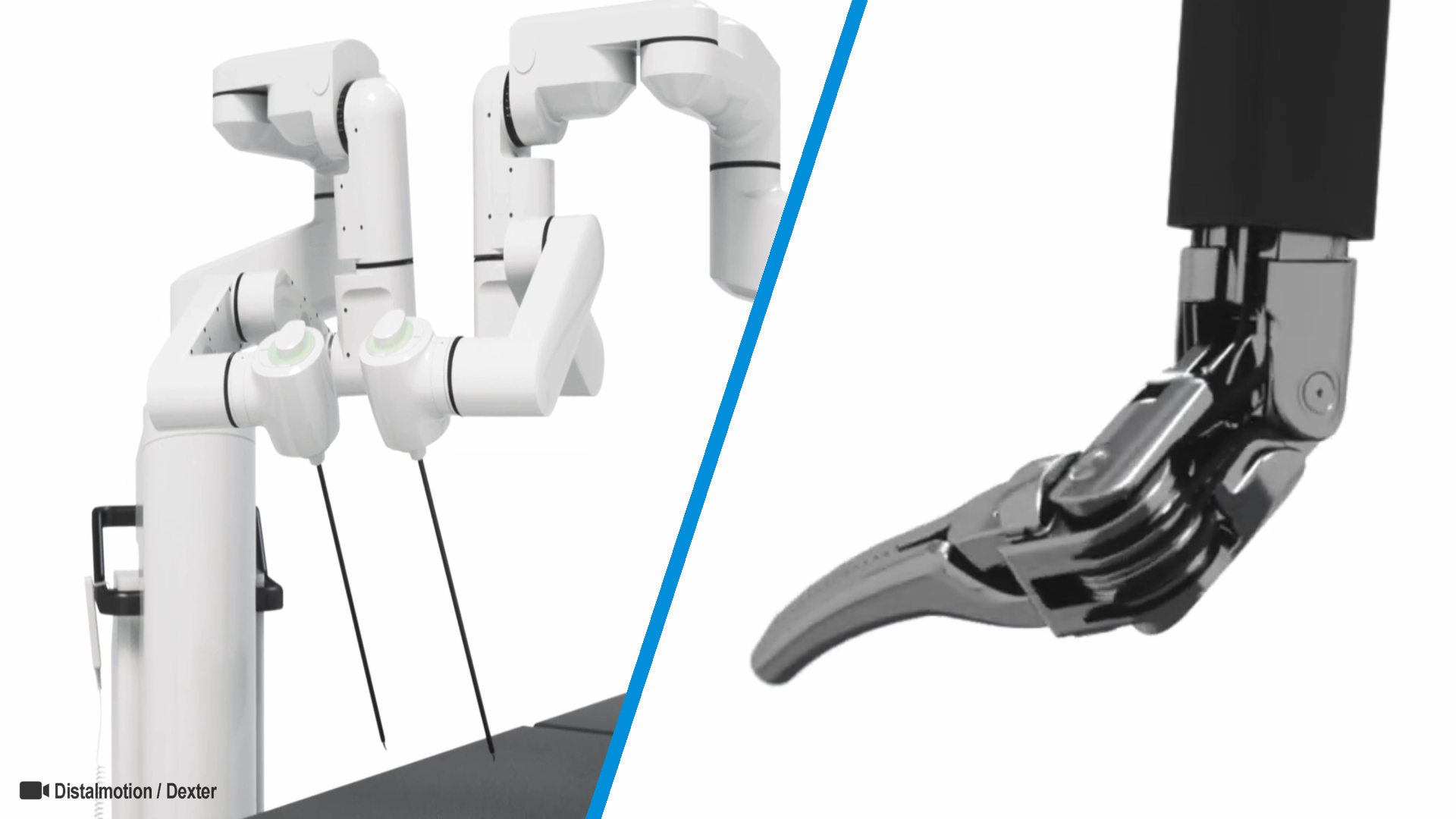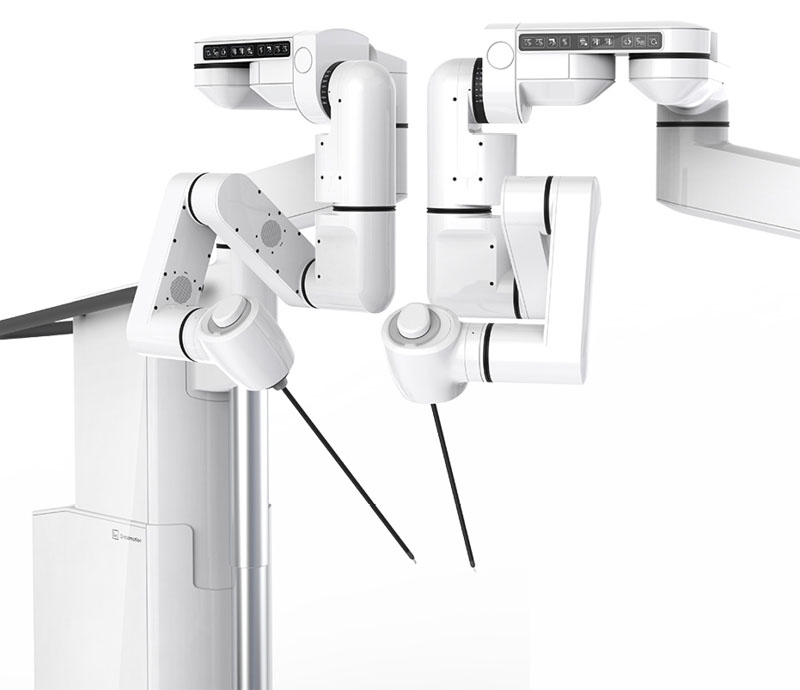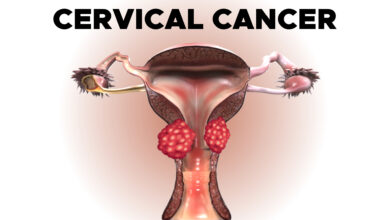
Dexter Surgical Robot Is Ready For Clinical Use And It Works With All Laparoscopy Tools
Dexter validation confirms Distalmotion surgical robot is safe for use and meets surgeons and nurses expectations.
The Dexter surgical robot is built with the aim of allowing surgeons to take a hybrid approach to minimally invasive surgery, using the surgical robot for tasks such as suturing and complex dissections while switching to a laparoscopic approach for stapling and basic dissections.
“This unique, hybrid approach results in a substantial simplification of surgical robots and hence also a drastic reduction in robotics cost. Dexter is the surgical robot for laparoscopic surgeons,” Distalmotion CEO Michael Friedrich told.
Robotic laparoscopic surgery is now widely available, with Intuitive Surgical’s da Vinci systems being the most common robots out there. These systems typically require specialty tools provided by the robot manufacturer, and the selection is quite limited compared with the wide array of conventional laparoscopic tools that exist.
The medical device company Distalmotion SA has hit a regulatory milestone in the commercialization of its surgical robot, Dexter, earning a CE mark in Europe.
The regulatory clearance of the surgical robot opens to the door to market launch in Europe in 2021. Friedrich said that the company expects the hybrid approach will be a selling point for all types of hospitals, from leading university hospitals to private clinics and small, regional facilities.
Hybrid Surgical Approach
With the Dexter surgical robot, Distalmotion is looking to tap into the millions of medium- to high-complexity laparoscopic procedures that could be performed using a surgical robot.
The Dexter is designed to be easy to bring in and out of the surgical space and used when robotic manipulation can help with increased precision, dexterity, and ergonomics.
Most traditional robotic surgery systems are designed to be operated in a remote, non-sterile environment, separate from the patient.
This approach, Distalmotion contends, is complex and costly, limiting adoption within minimally invasive surgery. In contrast, the Dexter robot is designed to be used in a sterile environment with the surgeon moving seamlessly from the robot to the patient at the surgical table.
The Dexter robot has two surgical arms, which are used to control the robot’s two instruments. The design allows operating room teams to change trocar sites and adjust instrument positions during surgery. The lean design also allows surgeons to switch between robotic and laparoscopic processes in under 20 seconds.
The surgeons can choose which tasks are best performed using the robot and which tasks should be done using traditional laparoscopic approaches. The Dexter robot is compatible with existing laparoscopic instruments and preferred imaging systems.
The Dexter also comes with its own single-use 8 mm instruments for routine use in dissection and suturing, both mono- and bipolar.
Distalmotion claims that the Dexter can be used alongside any commercial laparoscopic tower, allowing for 4K, 3D, ICG or any other existing or future imaging technology to be integrated along with it.
The console can be raised and lowered, like a standing desk, to allow the surgeon to operate sitting down or standing up.

“Dexter has already garnered tremendous interest in the surgical community and we look forward to answering the increasing demand for a medical device removing the complexity out of robotic surgery to fast track its widespread adoption in minimally invasive surgical care,” said Michael Friedrich, Distalmotion CEO in the announcement.
“Following the validation of our product clinical value and benefits earlier this year, I am now looking forward to starting a broader movement allowing every patient to access the benefits of robotic surgery”
In 2020, the company won a Red Dot award for the Dexter robot’s design, with competition jurors calling out the robot’s ergonomic and compact design.
The Dexter robot has been validated on human cadavers and pigs, according to the company. In August 2019, the company announced the successful completion of a cadaver study that included participation from more than 40 surgeons and nurses.
The study provided a proof of concept that the robot allowed surgical tams to switch between laparoscopy and robotic surgery across a range of surgical procedures.
In early 2020, a two-phase study confirmed the system’s safety and performance. In the first phase, surgical teams across urology, gynecology, and general surgery used the Dexter robot to perform several surgical tasks, including draping, docking, suturing, dissection, switching between laparoscopy and robotics, as well as removal and emergency scenarios.
In the second phase, two urologists and three general surgeons performed eight full procedures: one Nissen fundoplication, one partial cystectomy, three cholecystectomies, one radical nephrectomy, one partial gastrectomy, and one sigmoid mobilization.
“More than 60 surgical teams from Europe’s top hospitals have joined the validation studies at the various stages of the development of Dexter,” Friedrich said. “It is together with those surgeons and nurses that we have refined Dexter, which is now ready for real-life clinical use.”



